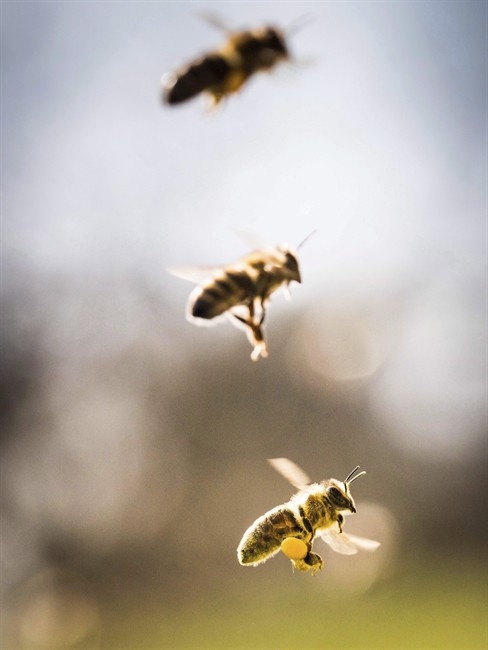Health Canada is sticking with its proposal to phase out most outdoor and agricultural uses of a common pesticide, even though a recent study found bees are only affected by the substance in certain circumstances.

The recommendation comes the same day as more than 200 scientists published an open letter in the journal Science asking international governments to develop agreements to not use so-called neonicotinoids and to prevent similarly harmful pesticides to be developed and used in the future.
In 2012, Canada’s Pest Management Regulatory Agency began studying nicotine-based pesticides known as neonicotinoids, commonly used by farmers and hobby gardeners to drive away pests like aphids and spider mites, after scientists linked them to high rates of honey bee deaths. The agency did multiple different evaluations of three different neonics and their impact on different organisms.
In 2016, it concluded one of the neonics, imidacloprid was building up in the surface and ground water and causing widespread death among aquatic insects. Its interim recommendation then was to ban imidacloprid from most agricultural and outdoor uses entirely.
That study, however, didn’t look at the impact on bees and other pollinators. The regulator did a separate evaluation on that front and concluded neonics only affect bees in certain ways and that if their application was banned on the main crops which are attractive to bees, the risk is “acceptable.”
WATCH: Classic Landscaping: Flowers to attract bees to your garden

Nonetheless, the earlier recommendation for a ban will stand, an official with Health Canada said Thursday. The department is accepting public comment on the report for the next 90 days and then will release its final plan in December.
Lisa Gue, an environmental health policy analyst at the David Suzuki Foundation, says Health Canada’s results were not as complete as European work, but she remains pleased the agency is still moving to phase out the pesticide’s use.

Get breaking National news
“Canada’s decisions are coming in much less protective than in the European Union,” Gue said.
The European Food Safety Authority in February confirmed its findings that most uses of neonicotinoids pose a risk to wild bees and honey bees. In April, the European Union member states voted in favour of a total ban on the use of neonicotinoids by the end of 2018, except when used inside closed greenhouses. Europe banned their use on any crops that attract bees five years ago.
WATCH: Bees take over man’s jeep in California

The Quebec-based environment group Equiterre said Thursday that Health Canada’s findings “glossed over” the impacts on bees of using seeds coated with neonics.
Bee colony collapses began occurring in substantial numbers about fifteen years ago and led to hundreds of studies to find out what was happening. Mites were responsible for some, but neonicotinoids were also connected. Many scientists and beekeepers say mites and weather might be what ultimately kills the bees, but neonics weaken them and make them more susceptible to those things.
The loss of bees represents a significant issue for food sources, since about one-third of food crops require pollinators for production.
Ontario beekeepers reported catastrophic losses of colonies over the last winter, with one-third reporting that 70 per cent or more of their bee colonies had died. Almost half of beekeepers in the province reported losing 50 per cent of their colonies.
Jim Coneybeare, president of the Ontario Beekeepers’ Association, said he lost more than 400 colonies and while the long, cold winter was to blame, bees weakened by neonics are far less able to survive a tough winter. The association says one in five Ontario beekeepers blamed pesticides directly for their losses.
“When I get my hives away from neonics, my bees look better,” said Coneybeare.
He says a total ban may not be necessary, but reducing the use of neonics at least 80 per cent could go a long way to promote honey bee survival.
Health Canada last year also recommended limiting the use of the other two most common neonics, clothianidin and thiamethoxam, and phasing them out for direct application on certain crops and municipal and residential lawns.







Comments